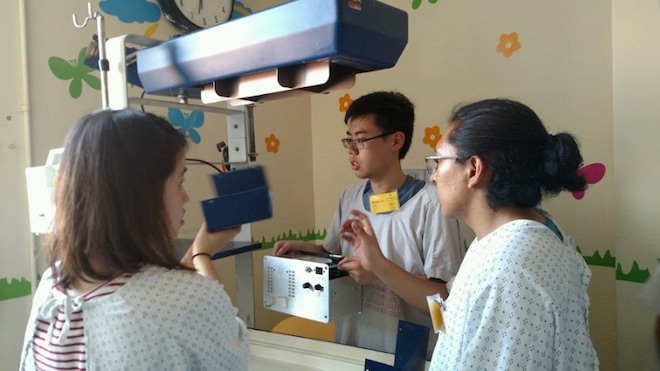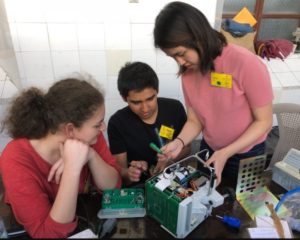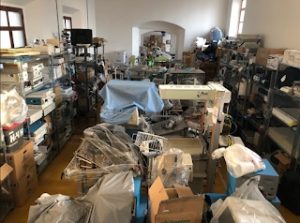
An anesthesia vaporizer that doesn’t deliver enough anesthesia; a rattling infant incubator with a tilted impeller; an infusion pump stuck in permanent “hold” mode; and a room filled with hundreds of medical devices needing attention are not typical spring break fare for university students.
But this wasn’t a typical spring break trip.
A dozen Vanderbilt biomedical engineering undergraduates spent their 2018 break week in Guatemala, working alongside 30 engineering students and their professors from a Guatemala university repairing medical equipment at four hospitals.

It was the sixth trip with BME students since Associate Dean Cynthia Paschal began offering the service learning course in 2008 and by all accounts was a phenomenal success. The Vanderbilt students brought expertise in biomedical engineering and devices; the students from the School of Engineering at Universidad del Valle de Guatemala (UVG) have a solid foundation in electronics and mechatronics.
In teams, they worked at four hospitals – Hospital Infantil de Juan Pablo II and INCAN, a cancer specialty hospital, both in Guatemala City; and Hospital Nacional Pedro de Bethancourt and Obras Sociales del Hermano Pedro, both in Antigua City.
Tori Qualls, Chad Keller, and María Belén Hernández from UVG repaired one of several broken infant incubators. In this case, broken fan mounts caused an awful noise and inability to distribute heat evenly. They proposed a way to fix it and went shopping for parts that night – a rubber tie, a bit of glue, a few screws, and duct tape. And it worked.
Leah Fassinger and Darwin Rivas from UVG worked on a non-invasive blood pressure monitor that had been out of service for years. By hooking it up to a DC power supply and running a variety of tests, they determined that with the right replacement battery the unit would function accurately in measuring blood pressure.
Prior to the trip, students were assigned to find manuals for equipment they knew they’d work on, assemble parts, and, for two students, devise a rigorous inventory system for at Obras Sociales Del Hermano Pedro, which had collected equipment and devices in a central location after a recent renovation. 
Two BME students – Seiver Jorgensen and Anna Word – devised a tracking and inventory system for the stored equipment before leaving Nashville. The hospital had a list of equipment but didn’t know what worked and what didn’t or what some of it was used for. It was a big job.
“OSHP was nothing short of a dream for biomedical engineers. We entered a room filled with hundreds of medical devices needing our attention,” Paschal wrote in a blog update about the trip.
In two days the students categorized and in most cases tested 250 pieces of equipment, coding them by color for condition: green (working); yellow (needs repairs); red (trash); or blue (use for parts).

The Vanderbilt and UVG students complemented each other well.
“They are extremely skilled engineers and often knew things we didn’t, so we made a good team. Most importantly, Dr. Paschal was forming connections between del Valle’s engineering program and each of the hospitals that we visited, trying to set it up to where their engineering students could continue doing the work we started year-round,” said Austin Hardcastle, a BME senior.
“If those connections continue to work out, I think that will be the best service we provided because we helped set up a sustainable partnership that gives the hospital consistent help on their equipment and the engineering school consistent education opportunities,” he said.
“We are started to achieve our goal,” Paschal said, “which is to work ourselves out of a job.”